Engine Mount Replacement Front, RWD
Removal Procedure
Notice: Broken or deteriorated mounts can cause misalignment and destruction of certain drive train components. When a single mount breaks, the remaining mounts are subjected to abnormally high stresses.
- Raise the vehicle.
- Remove the mounting through bolts on both sides of the engine.
- Raise the engine and block it into position.
- Remove the mounting to frame bolts and nuts.
- Remove the engine mounting.
Notice: When raising or supporting the engine for any reason, do not use a jack under the oil pan, any sheet metal, or the crankshaft pulley. Due to the small clearance between the oil pan and the oil pump screen, jacking against the oil pan may cause the pan to be bent against the pump screen. This will result in a damaged oil pickup unit.
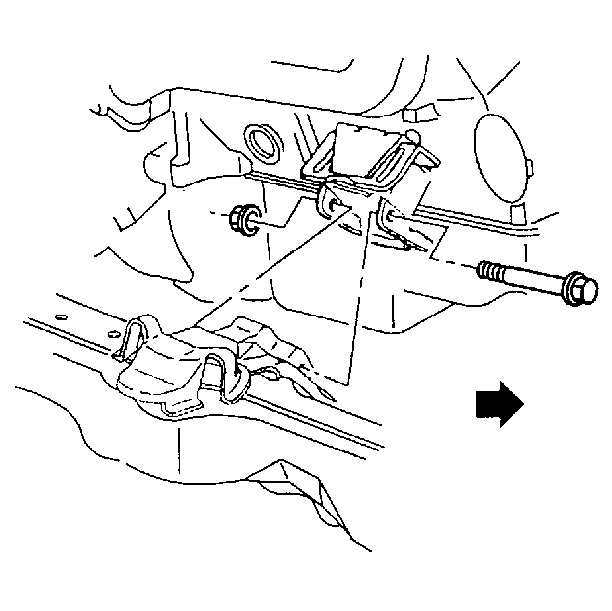
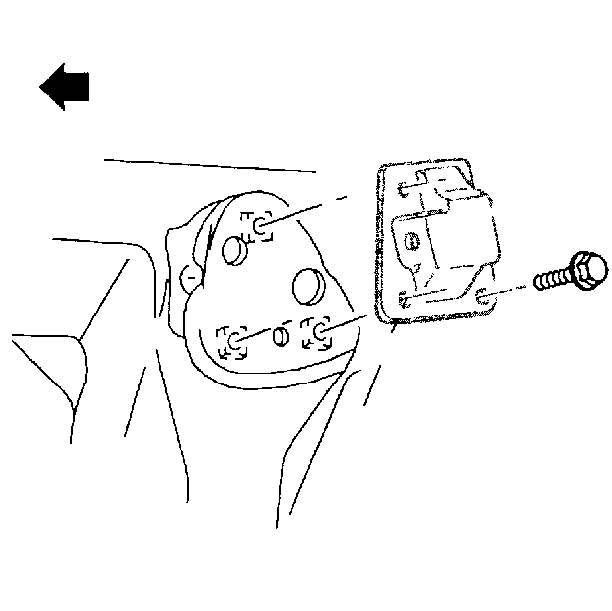
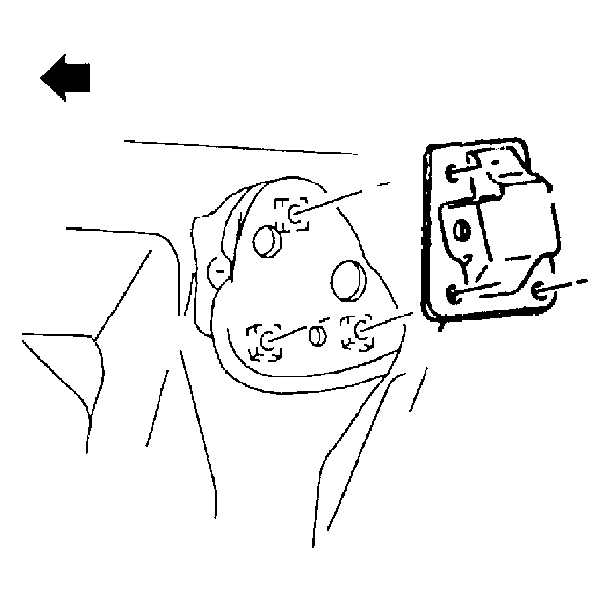
Installation Procedure
- Install the engine mounting to the frame.
- Install the engine to frame bolts and nuts.
- Lower the engine.
- Install the mounting through bolts and nuts.
- Lower the vehicle.


Tighten
| • | Tighten the bolts to 59 N·m (44 lb ft). |
| • | Tighten the nuts to 45 N·m (33 lb ft). |
Notice: Use the correct fastener in the correct location. Replacement fasteners must be the correct part number for that application. Fasteners requiring replacement or fasteners requiring the use of thread locking compound or sealant are identified in the service procedure. Do not use paints, lubricants, or corrosion inhibitors on fasteners or fastener joint surfaces unless specified. These coatings affect fastener torque and joint clamping force and may damage the fastener. Use the correct tightening sequence and specifications when installing fasteners in order to avoid damage to parts and systems.

Tighten
| • | Tighten the bolts to 95 N·m (70 lb ft). |
| • | Tighten the nuts to 68 N·m (50 lb ft). |
Notice: Use the correct fastener in the correct location. Replacement fasteners must be the correct part number for that application. Fasteners requiring replacement or fasteners requiring the use of thread locking compound or sealant are identified in the service procedure. Do not use paints, lubricants, or corrosion inhibitors on fasteners or fastener joint surfaces unless specified. These coatings affect fastener torque and joint clamping force and may damage the fastener. Use the correct tightening sequence and specifications when installing fasteners in order to avoid damage to parts and systems.
Engine Mount Replacement Front, 4WD
Removal Procedure
- Raise the vehicle.
- Remove the mount through bolts on both sides of the engine.
- Raise the engine and block into position.
- Remove the mount to frame bolts.
- Remove the engine mount.
Notice: Broken or deteriorated mounts can cause misalignment and destruction of certain drive train components. When a single mount breaks, the remaining mounts are subjected to abnormally high stresses.
Notice: When raising or supporting the engine for any reason, do not use a jack under the oil pan, any sheet metal, or the crankshaft pulley. Due to the small clearance between the oil pan and the oil pump screen, jacking against the oil pan may cause the pan to be bent against the pump screen. This will result in a damaged oil pickup unit.


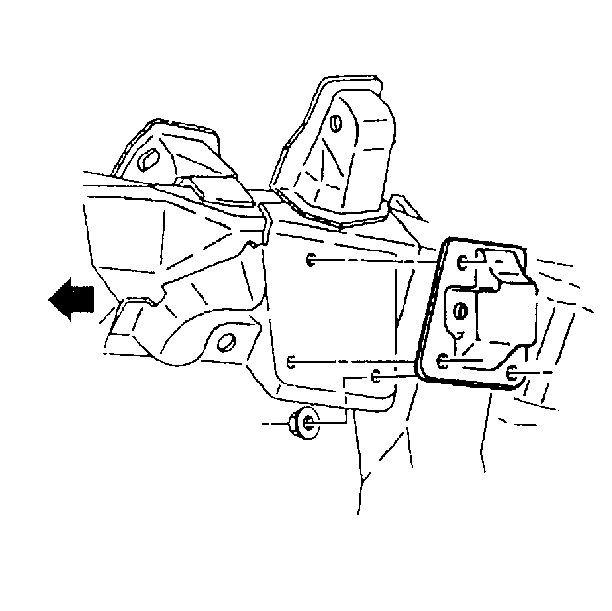
Installation Procedure
- Install the engine mounting to the frame.
- Install the engine mount to frame bolts and nuts.
- Lower the engine.
- Install the mounting through bolts and nuts.
- Lower the vehicle.


Tighten
| • | Tighten the bolts to 59 N·m (44 lb ft). |
| • | Tighten the nuts to 45 N·m (33 lb ft). |
Notice: Use the correct fastener in the correct location. Replacement fasteners must be the correct part number for that application. Fasteners requiring replacement or fasteners requiring the use of thread locking compound or sealant are identified in the service procedure. Do not use paints, lubricants, or corrosion inhibitors on fasteners or fastener joint surfaces unless specified. These coatings affect fastener torque and joint clamping force and may damage the fastener. Use the correct tightening sequence and specifications when installing fasteners in order to avoid damage to parts and systems.

Tighten
| • | Tighten the bolts to 95 N·m (70 lb ft). |
| • | Tighten the nuts to 68 N·m (50 lb ft). |
Notice: Use the correct fastener in the correct location. Replacement fasteners must be the correct part number for that application. Fasteners requiring replacement or fasteners requiring the use of thread locking compound or sealant are identified in the service procedure. Do not use paints, lubricants, or corrosion inhibitors on fasteners or fastener joint surfaces unless specified. These coatings affect fastener torque and joint clamping force and may damage the fastener. Use the correct tightening sequence and specifications when installing fasteners in order to avoid damage to parts and systems.
Engine Mount Replacement Rear, RWD
Removal Procedure
Notice: Broken or deteriorated mounts can cause misalignment and destruction of certain drive train components. When a single mount breaks, the remaining mounts are subjected to abnormally high stresses.
- Support the transmission in order to relieve the weight from the mount.
- Remove the mounting to the crossmember nut and washer.
- Remove the mount to transmission bolts and washers.
- Raise the transmission just enough in order to permit the removal of the mount.
- Remove the mount.
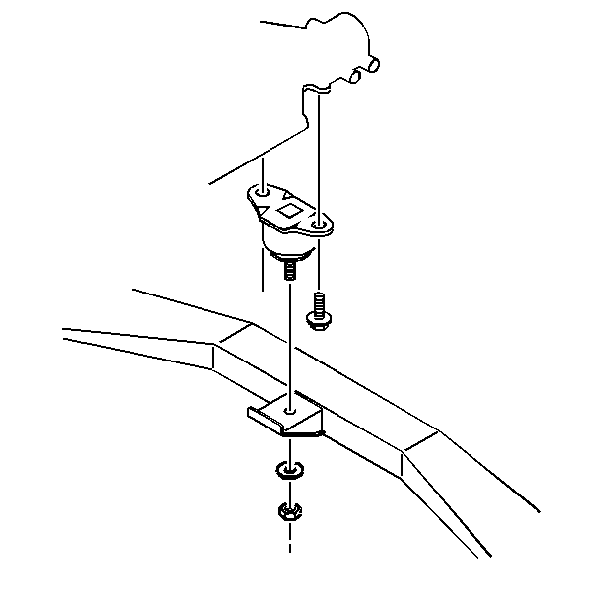
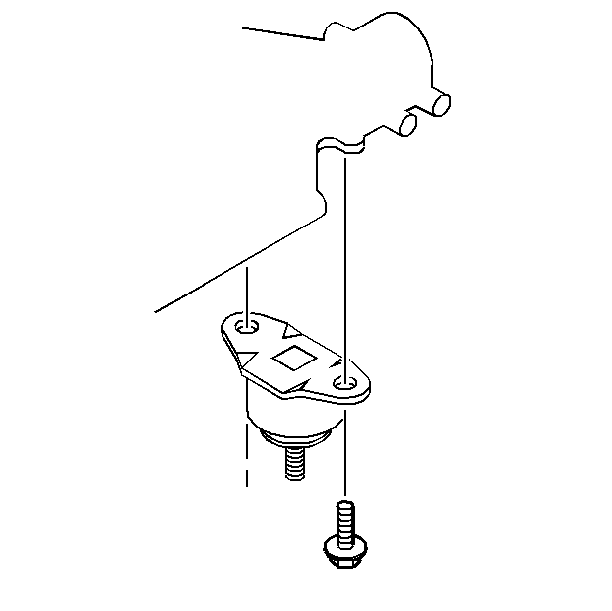
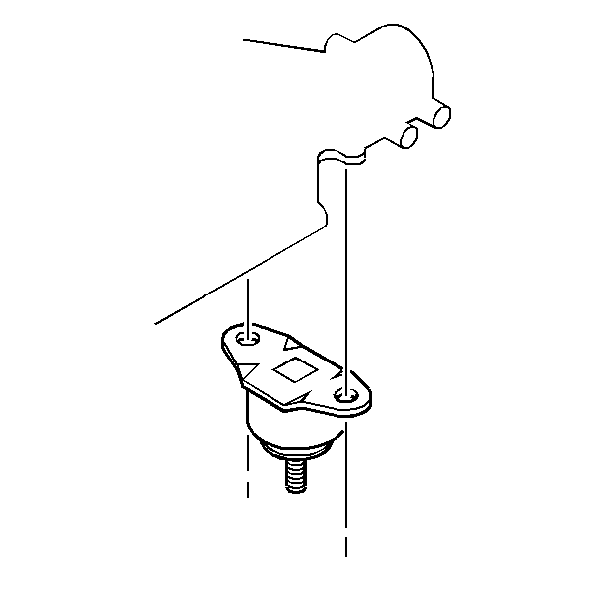
Installation Procedure
- Install the mount.
- Install the mounting to transmission bolts and washers.
- Lower the transmission.
- Install the mount to cross member nut and washer.



Tighten
| • | Tighten the nut to 47 N·m (35 lb ft). |
| • | Tighten the bolt to 53 N·m (39 lb ft). |
Notice: Use the correct fastener in the correct location. Replacement fasteners must be the correct part number for that application. Fasteners requiring replacement or fasteners requiring the use of thread locking compound or sealant are identified in the service procedure. Do not use paints, lubricants, or corrosion inhibitors on fasteners or fastener joint surfaces unless specified. These coatings affect fastener torque and joint clamping force and may damage the fastener. Use the correct tightening sequence and specifications when installing fasteners in order to avoid damage to parts and systems.
Engine Mount Replacement Rear 4WD
Removal Procedure
- Support the transmission in order to relieve the weight from the mount.
- Remove the mounting to the crossmember nuts and washers.
- Remove the mount to transmission bolts and washers.
- Raise the transmission just enough in order to permit the removal of the mounting.
- Remove the mount.
Notice: Broken or deteriorated mounts can cause misalignment and destruction of certain drive train components. When a single mount breaks, the remaining mounts are subjected to abnormally high stresses.


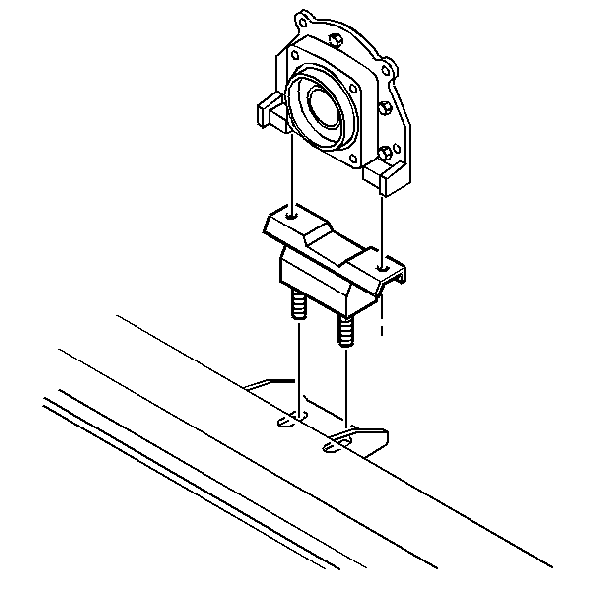
Installation Procedure
- Install the mounting.
- Install the mounting to transmission bolts and washers.
- Lower the transmission.
- Install the mount to cross member nuts and washers.


Tighten
Tighten the bolts to 54 N·m (40 lb ft).

Tighten
Tighten the nuts to 47 N·m (35 lb ft).
